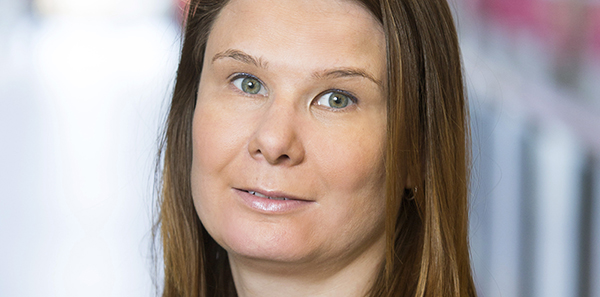1:30min

By Helen Carter
Journalist
Optometrists should be looking for and treating digital eye strain in children and teaching them blink training to help combat digitally related dry eye problems, Super Sunday will hear.
Head of the University of Canberra’s Discipline of Optometry, Dr Nicola Anstice, said Australian children were presenting more commonly with a range of visual problems related to screen use.
She will mainly speak about how digital devices can offer optometrists novel ways of testing and treating children’s vision, focussing on the use of digital devices for vision assessment and treatment of amblyopia and digital eye strain including focusing and binocular vision problems.
But she will also discuss the digital age and its impact on children’s vision at Optometry NSW/ACT’s 8th Super Sunday at Luna Park’s Big Top in Sydney on 10 March.
‘We should ask every patient, including children, about their digital device use, what type of screens they are using, viewing distances, how many hours a day they use digital devices and whether they multi-screen because concurrent screen use is associated with a higher incidence of digital eye strain symptoms,’ Dr Anstice told Optometry Australia.
‘About 80 per cent of children report digital eye strain when using digital devices, and this can cause asthenopia and dry eye.
‘We should be making sure we do proper dry eye assessments in children as we do in adults, even though dry eye is generally seen as an adult condition, because we don’t want to miss dry eye in kids.
‘Evidence from studies indicates dry eye and digital eye strain is an issue in kids today and prevalence of dry eye in children is higher than ever. Other symptoms include focusing problems and headaches.
‘The jury is out on whether digital use can cause refractive error but it may make small refractive errors more noticeable and more symptomatic.
‘Ensure to do a complete eye exam because even small refractive errors and binocular vision problems are correctable and if not corrected can exacerbate digital strain.’
She said what used to be called computer vision syndrome was now called digital eye strain because it related to all digital device use not just computers.
Blink training
Dr Anstice said optometrists had a vital role to play in education and awareness including blink training since screen use was associated with more incomplete blinking.
‘When looking at digital screens on phones, computers, iPads etc, we often don’t do a full blink and are more likely to do a partial blink than if reading hard copy material, resulting in reduced ocular surface lubrication,’ she said.
Optometrists could also advise children to take regular screen breaks, and alert them to the American Optometric Association’s 20/20/20 campaign to prevent digital eye strain which advises to take a 20 second break from screens every 20 minutes and look at something 20 feet away.
Dr Anstice said studies showed that 80 per cent of teenagers may experience significant eye strain including tired, dry eyes after using digital devices for more than two hours straight.
Other studies found that 68 per cent of pre-schoolers aged three to five regularly used computers and over half participated in regular online activity. The average time eight to 18-year-olds used digital devices was 7.5 hours per day and even pre-schoolers were using electronic screens for up to 2.5 hours a day.
‘Parents nowadays think literacy also means being competent on digital screens,’ she said.

Associate Professor Jennifer Craig
Other speakers include world expert on dry eye, Associate Professor Jennifer Craig from the University of Auckland, who will give two talks on the treatment of severe dry eye and how the science on Meibomian gland dysfunction translates into clinical practice, and keynote speaker Professor Fiona Stapleton who will discuss why corneal infection remains a problem for contact lens wearers.
GPs Kate Kalloniatis and Chris Gilbert will discuss when optometrists should refer to a GP for a vascular workup and whether GPs can manage papilloedema, hypertensive crisis and suspected thyroid disease, as well as discussing the management of systemic conditions that optometrists encounter including smoking, hypertension, disc swelling and diabetes.

Dr Kate Kalloniatis and Dr Chris Gilbert
Practice staff stream and discounted Luna Park rides
Bring the family to Luna Park for a fun-filled day with discounted ride tickets, and invite your practice staff for the inaugural Practice Staff Stream 2. This staff education program, exclusive to staff of OA members, is tailored to dispensers, reception staff, sales staff and technicians. Numbers are limited to two staff per OA member.
Up to 30 CPD points, including 18 therapeutic points, are available for optometrists attending the optometry stream.
OA members register here and non-OA members here.
______________________________
Tagged as: Dry eye, Myopia, SuperSunday NSW